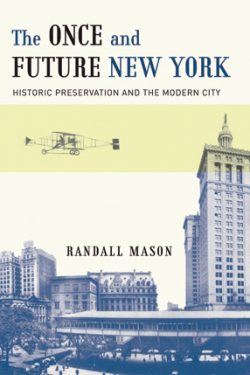The controversial 1963 demolition of Pennsylvania Station is generally cited as the event that gave birth to New York City’s historic preservation movement. But as historian Randall Mason reveals in The Once and Future New York, preservation has been a persistent force in the development of New York since the late nineteenth century, when the city’s leading politicians, planners, and architects first recognized the need to protect some measure of the past in the rapidly evolving city. Between 1890 and 1920, preservationists saved and restored buildings, parks, and monuments throughout the city. Mason argues that these efforts created a “memory infrastructure” that established a framework for New York’s collective memory and fused celebrations of the city’s past with optimism about its future.
Rich with archival research, The Once and Future New York focuses on three major projects–the restoration of City Hall Park, the ultimately failed attempt to save historic St. John’s Chapel, and the construction of the Bronx River Parkway. Challenging several myths about historic preservation, Mason asserts that preservationists were not simply antiquarians concerned only with architecturally significant buildings, but that many were social reformers interested in recovering the city’s collective history. He demonstrates that, rather than being fundamentally opposed to growth, historic preservation in this period was integral to modern urban development.
Randall Mason
Randall Mason is associate professor in the School of Design at the University of Pennsylvania and coeditor of Giving Preservation a History: Histories of Historic Preservation in the United States.
